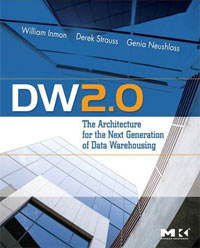Chief Data Officer Master Class
Class Description:
How do you effectively launch the Office of the CDO? What is needed is an Integrated Capability Framework, bringing together People, Process, Architecture and Technology, and embracing an end-to-end vision for Data & Analytics. Gaps in this Framework, if left unattended, will certainly undermine your ability to derive ongoing value from your Big Data investments.
This class provides insight into key considerations for the success of the Office of the CDO – based on the Gavroshe 7 Streams Play Book for Chief Data Officers.
What you will learn
- Differentiate the roles of the Chief Data Officer and the Chief Digital Officer
- Understand the options available for the CDO reporting line
- Understand how to turn short-term Big Data wins into sustainable business value
- Understand the Data Marshaling Yard (DMY) – a better version of the Data Lake
- Describe the DMY architecture and how it differs from and complements the Data Warehouse
- Understand a balanced approach to Data Privacy, Data Security and Data Ethics
- Understand how to manage organizational change of both business and technology teams
- Describe measures of success of the CDO role
Main Topics
- The Role of the Chief Data Officer – the Remit and the Reporting Line
- Building a Data & Analytics Capability – Why? And Why Now?
- Developing your Data & Analytics Strategy – Long-term Program with Short-term wins
- The Gavroshe 7 Streams Playbook – Using Accelerators to Launch your Data & Analytics Program
- Designing a Robust Long-term Architecture
- Balancing your Team – Developing the Right Mix of Technological Expertise and Business Knowledge
- Managing the Organizational Change
- Data Privacy and Data Security
- Data Ethics
- Measuring Success
Detailed Outline:
- The Role of the Chief Data Officer – the Remit and the Reporting Line
Should the role of Chief Data Officer report into the CIO or into the CEO or another Business Executive? Should it encompass both Data and Analytics or is it best to focus purely on Data? Is it mainly a strategy role or should it be heavily implementation-oriented? Should the Chief Information Security Officer report to the CDO? Should the role be mainly defensive (compliance with regulations) or offensive (growth oriented; monetizing the Data of the enterprise)? - Building a Data & Analytics Capability – Why? And Why Now?
“Data & Analytics” should be recognized as a key enterprise capability and should support and enable all the other enterprise capabilities. An Enterprise Capability Map is a good starting point, using overlays to highlight those areas of the business that need the most urgent attention, and enabling the achievement of the highest ranking business goals. This Enterprise Capability Map in turn should drive the Data & Analytics Capability Map. - Ensuring Sustainable Business Value
Beware of putting all efforts into short-term wins and neglecting the longer-term vision. It is imperative to lay the foundation for the ultimate vision and put in all the “plumbing” infrastructure. We need to remember the lesson we learned in the early days of Data Warehousing – we should architect and design for the end state, while delivering short-term wins: failure to do this has led to myriad “islands of information” that could not be readily changed and did not provide long-term business value. - Developing your Data & Analytics Strategy – Long-term Program with Short-term wins
- The Strategy should address several aspects, including:
- Accessible, accurate and actionable data
- A Data Architecture that is flexible and scalable
- Better governance and controls around the data to ensure continuous improvement of enterprise data resources
- Better insights for the Firm and its Clients
- The Gavroshe 7 Streams Playbook – Using Accelerators to Launch your Data & Analytics ProgramThe successful CDO needs to focus on the 7 Streams for Strategic Data Management:
- Data Governance – establishing the Data Governance Council, Data Policy and
the Data Stewardship process - Data Architecture – establishing a Data Reference Architecture and the Data
Modeling process - Data Asset Development – iteratively plan, design, develop and deliver
enterprise-class Data Assets - Data Quality – profile, map and cleanse Critical Data Elements
- Data Context – develop a Business Glossary and Data Lineage
- Analytics – support implementation of Business Intelligence and Advanced
Analytics toolsets and enable Data Science - Infrastructure – manage the Information Life Cycle of Corporate Data Assets and manage Data & Analytics Platforms to cater for SMAC (Social, Mobile, Analytics and Cloud)
Examples are provided of Play Cards and Templates, embedded in the Playbook, which can be used to accelerate the creation of the relevant Data & Analytics Capabilities.
- Data Governance – establishing the Data Governance Council, Data Policy and
- Designing a Robust Long-term Architecture
- What is the Future of Data Warehousing and Data Quality Improvement? Has Big Data made these obsolete?
- What are the drivers for Big Data? For whom are we building Big Data Capabilities?
- Beyond DW2.0 – integrating the tried and tested DW2.0 components with the new Big Data Capabilities, including an overview of the Data Marshaling Yard and modern approaches to Master Data Management
- Balancing your Team – Developing the Right Mix of Technological Expertise and Business Knowledge
- Should the CDO centralize or federate the Data & Analytics Team?
- Establishing a Center of Excellence which incorporates 4 pillars
- Enterprise Data Governance
- Enterprise Analytics and Data Science
- Enterprise Data Architecture
- Enterprise Data Development
- Managing the Organizational ChangeThe CDO needs to lead the organizational change, paying specific attention to the following:
- In the Business Community – Data Governance, Analytics and Data Science
- In the Technology Community – Agile Design/Build, Cloud Computing and other modern platforms, balancing Data Security needs with ease of Data Access
- Measuring SuccessThe CDO must gain organizational buy-in from the start as to how the Office of the Chief Data Officer will be measured. Some approaches are:
- Business Value realization
- Relief from Technology Pain Points
- The Change-enabled Enterprise – making it easier to introduce change
- Data Privacy & Security
The CDO collaborates with the Chief Privacy Officer and the Chief Information Security Officer on these matters. A good example is General Data Protection Regulation (GDPR), which gives control of personal information back to its individual owners: requiring businesses to capture, control and protect data under strict guidelines that impose hefty fines for non-compliance. The May 25, 2018 deadline for General Data Protection Regulation (GDPR) may have come and gone, but the compliance journey is only just beginning as firms plan more robust and sustainable solutions that can support a cost-efficient response to data subject access requests and accommodate regulatory change over the long term. - Data Ethics (especially in the light of AI/ML)This is an increasingly important focus area for the CDO. “Data Ethics refers to systemizing, defending, and recommending concepts of right and wrong conduct in relation to data, in particular personal data.” Kitchin, R. (2014) The Data Revolution: Big Data, Open Data, Data Infrastructures and Their Consequences.
We will discuss:- Ownership – Individuals own their own data.
- Transaction Transparency – If an individual’s personal data is used, they should have transparent access to the algorithm design used to generate aggregate data sets.
- Consent – If an individual or legal entity would like to use personal data, one needs informed and explicitly expressed consent of what personal data moves to whom, when, and for what purpose from the owner of the data.
- Privacy – If data transactions occur all reasonable effort needs to be made to preserve privacy.
- Currency – Individuals should be aware of financial transactions resulting from the use of their personal data and the scale of these transactions.
- Openness – Aggregate data sets should be freely available.
- Algorithm Transparency – Inclusiveness/exclusiveness of certain sectors of the population based on use of Algorithms.


